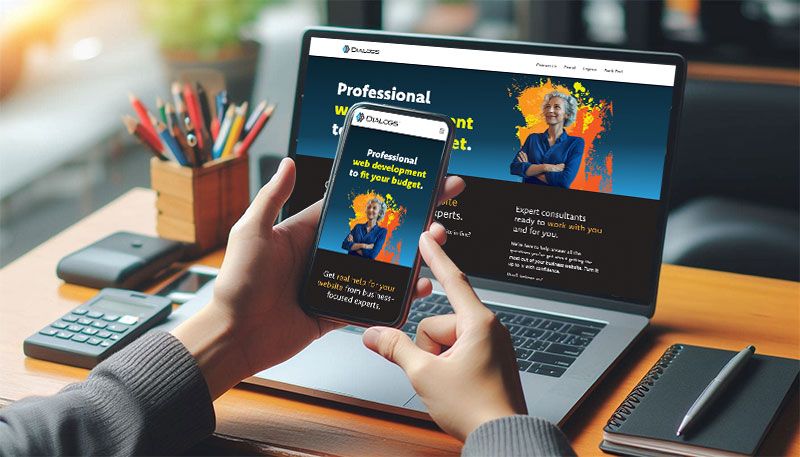
“Responsive” vs. “Mobile-Friendly”: Choosing the Right Design for Your Website
Have you looked at your website's visitor analytics? You might be surprised by how many users visit websites on mobile devices. This is especially true for consumer-oriented services, but it's true even for B2B and all other kinds of business websites. Recent statistics indicate that mobile web use worldwide is easily the majority, topping 60%. So if you're not thinking your website needs to be mobile—you should.
In today's mobile-first world, ensuring your website looks good and functions flawlessly across all devices is crucial. But when it comes to website design, you will encounter two terms: “responsive design” and “mobile-friendly design.” While they both aim for a positive user experience, they approach it very differently.
Here's a breakdown to help you decide which is best for your website.
Mobile-Friendly Design: A Simplified View
Imagine a shrunk-down version of your desktop website – that's the essence of mobile-friendly design. It ensures your website is accessible and readable on mobile devices. Key elements are adjusted for smaller screens:
- Font sizes increase to prevent squinting.
- Images are resized to avoid slow loading times.
- Menus might be simplified for easier navigation with touchscreens.
While mobile-friendly design allows basic functionality on mobiles, it has limitations:
- Limited Design Flexibility: The layout remains largely unchanged, potentially looking clunky on mobiles.
- Compromised Desktop Experience: The focus is on mobile usability, which may sacrifice some desktop functionality.
- Maintenance of Two Versions: You'll need to maintain both the desktop and mobile versions of your website, potentially increasing costs.

Responsive Design: Adapting to Any Screen
Responsive design takes a more fluid approach. It uses code that can adjust the website's layout and elements dynamically based on the screen size of the device accessing it. That means it looks good on any screen size. Think of it as a website that can transform itself!
- Optimal Viewing Experience: The website adapts its layout, menus, and content for desktops, tablets, and mobiles, providing a seamless user experience across devices.
- Low Maintenance: You only manage one set of website code that automatically adjusts for different screens, saving time and resources, and simplifying new additions and enhancements over time.
- Improved SEO (Search Engine Optimization): Because so many users are on mobile screens, search engines including Google favor responsive websites, potentially boosting your search ranking.
Responsive Design: The Clear Winner for Most
In today's multi-device world, responsive design offers a clear advantage. It ensures your website looks sharp, functions flawlessly, and delivers a positive user experience on any screen size. This not only improves visitor satisfaction but also translates to better engagement and conversions.
When Might Mobile-Friendly Design Be Enough?
While responsive design is generally recommended, there might be a few exceptions:
- Simple Websites with Limited Traffic: If your website is a basic landing page with minimal content and receives low traffic, a mobile-friendly version might suffice.
- Internal Tools or Dashboards: For internal tools or dashboards accessed primarily on desktops, mobile-friendliness might be adequate.
The Final Word
If you want a modern, user-friendly website that delivers value in a mobile-first world, responsive design is the clear choice. It offers a future-proof solution that caters to your audience's needs, ultimately helping your website succeed.
Have more questions? We're happy to help. Give us a call.
